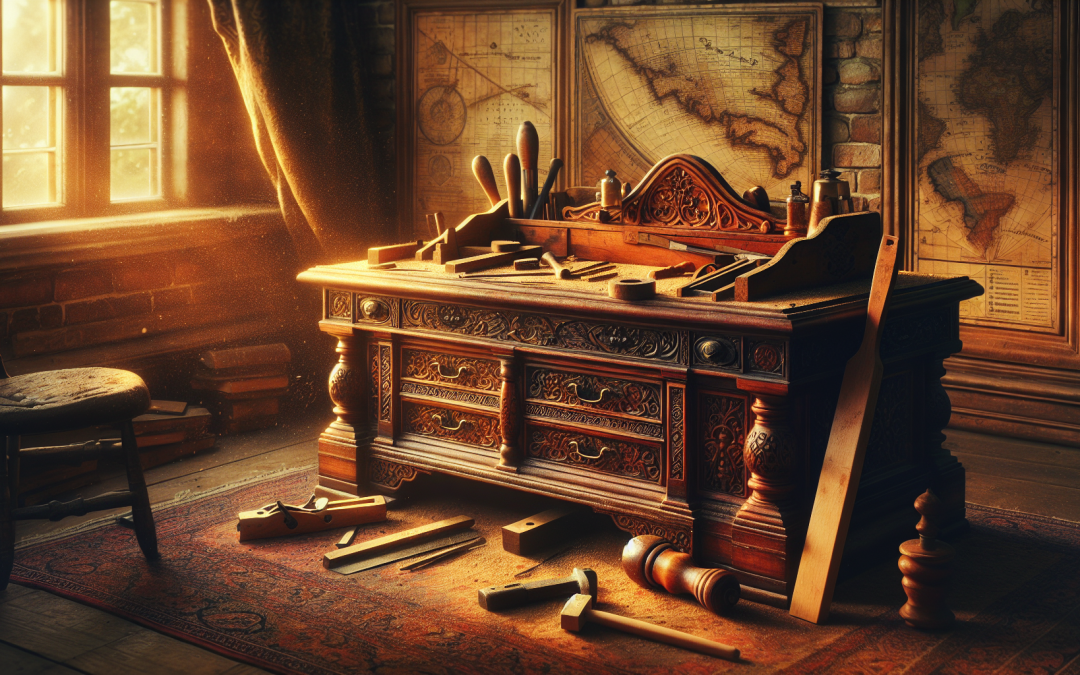Delving into the Intricate World of Antique Furniture
A fusion of history and art, antique furniture possesses an allure that is both timeless and captivating. Beyond their surface elegance, each piece is an intricate puzzle, speaking volumes about the craftsmanship of yesteryears. To truly appreciate and restore such pieces, one must embrace a deep understanding of traditional woodworking techniques and the right tools. Notably the use of historical woodworking tools we’ve rediscovered can bring a touch of authenticity and finesse to your refurbishing adventure.
Essential Woodworking Tools: Honing the Craft
Early artisans making these pre-loved furniture were highly skilled, often utilizing basic yet very effective tools like saws, chisels, and planes. Understanding how these essential woodworking tools were used can help not only in the actual restoration work but also in understanding the original manufacturing process and techniques employed. Our earlier post on essential woodworking tools is a good starting resource for those looking to equip themselves for such projects.
Mastering the Art: Avoid Common Mistakes
The restoration of antique furniture comes with its own set of unique challenges and common mistakes. One of the basic tasks in furniture restoration is measuring. The use of proper measurement tools and techniques can help in avoiding alterations to the original dimensions of the piece.Understanding common woodworking mistakes is key to crafting an antique masterpiece.
The Song of Wood: Understanding Material and Finish
Antique furniture, owing to its age, can often come with scratches, blemishes, or faded finishing. Part of the refurbishing process involves correcting these imperfections while aiming to preserve the piece’s original character. Knowledge of wood properties can also help determine suitable types and methods of finish application. An understanding of the different types of wood and their properties is key to knowing how to treat the apartment surfaces and achieve a smooth, lasting finish.
Understanding Joinery: Stitching History Together
Insights into classic joinery techniques used in the manufacture of antique furniture are essential to ensure the restoration is accurate and structurally sound. Dovetails and mortise-and-tenon, for example, were often used to create furniture joints in olden times. Re-creating the same might require a specific skill set targeted at these old-school techniques but knowing them becomes pivotal for a complete refurbish.
Old School Meets New: Skill-Building for a Cherished Hobby
In this journey of restoring antique furniture, you’ll find that the aged techniques have the same relevance today as they did centuries ago. The beauty of these traditional woodworking skills lies in their universality, adaptability, and sheer joy they bring to the craftsperson. Whether you’re an enthusiast seeking to improve your skills or a hobbyist looking to start, these knowledge nuances can serve as a lighthouse, guiding you towards your goal.
Through the journey of refurbishing antique furniture, remember that each piece has its own story, a slice of history that has stood the test of time. In doing so, we are not merely recycling old furniture but rekindling a historical adventure, releasing them back into the world for a new generation to cherish and admire. So, sink your teeth into woodworking, learn the tricks of the trade, and every step of the way, remember to enjoy the process. After all, history is certainly worth repeating.

